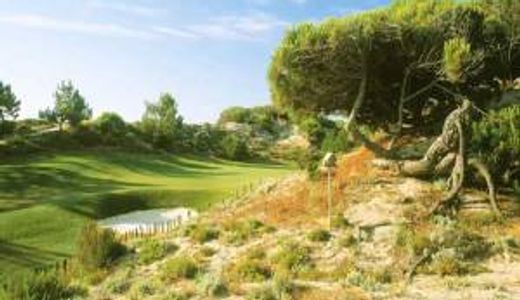Eco Restoration & Education

The 138-acre Oitavos Dunes Golf & Resort is located in Cascais, Portugal in the Sintra-Cascais National Park, close to the Guincho beach and surrounded by the Atlantic Ocean to the west. The course was designed by Drew Rogers of Art Hills/Steve Forrest and Associates. The golf course is ranked in the top 100 courses in the world, has hosted the European Golf Championship and Portuguese Championships, and is a Certified Gold Signature Sanctuary. The property is a mosaic of various habitats including stabilized dunes, pine flat woods, and dense stands of umbrella pine. Our ecological land plan integrated these habitats to maximize wildlife diversity throughout the property.
A major focus of habitat management for the site was to remove invasive plants and re-vegetate with native vegetation primarily grown locally or moved from disturbed areas. A large nursery was established on site to grow native plants. Because of the proximity of the property to open dunes areas, vegetated valleys, and the coast, it plays an important role in the overall biological integrity of the ecosystem.

The site had no surface water due to disturbance; therefore wildlife had no source of freshwater. We worked with project staff to develop “quinta tanks” (literal translation is farm tank) to provide wildlife watering holes. These tanks are recycled bathtubs and sinks set into the ground, disguised with native vegetation, and filled with water from golf course drainage or rainfall. The tanks have increased the biodiversity of the site without changing the integrity of the landscape.
The maintenance facility is state of the art, but was re-purposed from an older farm building. We prepared and implemented a Natural Resource Management Plan that provides detailed protocols and processes for managing the homes and golf course. Ecological risk assessments were conducted to evaluate the pesticides proposed for use on the property. Given that we are using drainage water to fill up the “quinta tanks” we were very careful to select materials that were safe for wildlife and were as short lived as possible. Extensive Best Management Practices (BMP) were specified and implemented to protect soil, water, and vegetation. Integrated Pest Management (IPM) strategies have been incorporated into every aspect of the plan and maintenance of the community and golf course.
We prepared and implemented an Education Program for the staff, golfers, and school children. Each year elementary school aged children visit the property to learn about sustainability and how to have human-managed landscapes that are compatible with nature.
10517 Ocean Hwy, Ste. 4 Unit 304, Pawleys Island, SC 29585 USA | 843-371-1609 | info@TheSmartGroupInc.com
Copyright © 2019 The Smart Group, Inc.